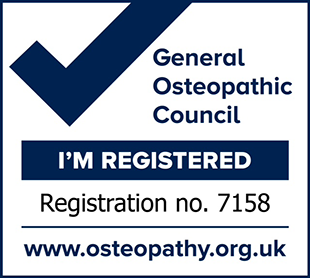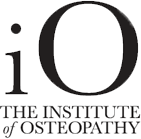The Basic Principles of Osteopathy
Osteopathy provides a broad range of approaches in the maintenance of health and the management of disease. Osteopathy is grounded in the following principles for treatment and patient management:
*The human being is a dynamic functional unit, whose state of health is influenced by the body, mind and spirit;
*The body possesses self-regulatory mechanisms and is naturally self-healing;
*Structure and function are inter-related at all levels of the human body;
*The rule of the artery is supreme.
Within that framework, Osteopaths incorporate current medical and scientific knowledge when applying Osteopathic principles to patient care. Osteopaths recognize that each patient’s clinical signs and symptoms are the consequences of the interaction of many physical and non physical factors.
It emphasizes the dynamic inter-relatedness of these factors and the importance of the patient-practitioner relationship in the therapeutic process. It is a patient–centered, rather than disease-centered form of health care. Structural diagnosis and Osteopathic treatment are essential components of Osteopathy. Osteopathic treatment is based on facilitating normal self-regulating/self-healing mechanisms in the body by addressing areas of tissue strain, stress or dysfunction that may impede normal, neural, vascular and biochemical mechanisms. The practical application of this approach is based on several structural-functional relationship models described below. Osteopaths use these together and structure diagnostic information and interpret the significance of neuro-musculoskeletal findings for the overall health of the patient. Osteopathy is thus not limited to the diagnosis and treatment of musculoskeletal problems, nor does it emphasize joint alignment and radiographic evidence of structural relationships.
Osteopathy is more concerned with the manner in which the biomechanics of the musculoskeletal system are integrated with and support the entire bodily physiology. Although manual techniques are used by various manipulative therapy professions, the unique manner in which Osteopathic techniques are integrated into patient management, as well as the duration, frequency and choice of technique, are distinctive aspects of Osteopathy. Every Osteopath is indeed different!
Structural-functional relationship models: Five main models of structural-functional relationships guide the Osteopathic practitioner’s approach to diagnosis and treatment. These models are usually used in combination to provide a framework for interpreting the significance of somatic dysfunction within the context of objective and subjective clinical information. The combination chosen is adapted to the patient’s differential diagnosis, co-morbidities, other therapeutic regimens and response to treatment.
The biomechanical structure-function model views the body as an integration of somatic components that relate as a mechanism for posture and balance. Stress or imbalance within this mechanism may affect dynamic function, increase energy expenditure, alter proprioception, (the sense of the relative position and movement of neighbouring parts of the body), change joint structure, impede neurovascular function and alter metabolism. This model applies therapeutic approaches, including Osteopathic techniques which allow for the restoration of posture and balance and efficient use of musculoskeletal components.
The respiratory/circulatory structure-function model concerns itself with the maintenance of extracellular and intracellular environments through the unimpeded delivery of oxygen and nutrients, and the removal of cellular waste products. Tissue stress or other factors interfering with the flow or circulation of any body fluid can affect tissue health. This model applies therapeutic approaches, including Osteopathic techniques to address dysfunction in respiratory mechanics, circulation and the flow of body fluids. Henceforth, the rule of the artery is supreme – a healthy body requires good, uninterupted blood flow to function for optimum health.
The neurological structure-function model considers the influence of spinal facilitation, proprioceptive function, the autonomic nervous system and activity of nociceptors, (pain fibres) on the function of the neuro-endocrine immune network. Of particular importance is the relationship between the somatic and visceral, (autonomic) systems. This model applies therapeutic approaches, including Osteopathic techniques to reduce mechanical stress, balance neural inputs and reduce or eliminate nociceptive drive.
The bio-psychosocial structure-function model recognizes the various reactions and psychological stress which can affect health and well-being. These include environmental, socio-economic, cultural, physiological and psychological factors that influence disease. This model applies therapeutic approaches, including Osteopathic techniques to address the effects of and reactions to various bio-psychosocial stress.
The bio-energetic structure-function model recognizes that the body seeks to maintain a balance between energy production, distribution and expenditure. Maintaining this balance aids the body in its ability to adapt to various stressors, (for example: immunological, nutritional, psychological). This model applies therapeutic approaches, including Osteopathic techniques to address factors which have the potential to deregulate the production, distribution or expenditure of energy.
If you have any problems, or your symptoms persist, then please call the Sports Injuries Specialist – Registered Osteopath immediately for exceptional results:
Treatment: Harrow Osteopaths_Wembley Osteopaths_Chelsea Osteopaths. Principles of Osteopathic Treatment At Harrow Osteopaths_Wembley Osteopaths_Chelsea Osteopaths_The Sports Injuries Specialist – Registered Osteopath. Regulated: Harrow Osteopaths_Wembley Osteopaths_Chelsea Osteopaths_The Sports Injuries Specialist -Registered Osteopath.
ZAHIR CHAUDHARY, BA (Hons), BSc (Hons), ND, M Ost.Med.
Email: emergencyosteopath@gmail.com
Call: ![]() 0208 423 6209;
0208 423 6209; ![]() 0792 100 4705
0792 100 4705
Web: https://www.sportsinjuriesspecialist.co.uk
CHELSEA OSTEOPATHS, 208 FULHAM ROAD, CHELSEA, LONDON. SW10 9PJ.
HARROW OSTEOPATHIC CLINIC, 9 LITTLETON ROAD, HARROW, MIDDLESEX. HA1 3SY.
WEMBLEY OSTEOPATHS, 31 NORVAL ROAD, NORTH WEMBLEY, MIDDLESEX. HA0 3TD.
DAVID LLOYD SUDBURY HILL OSTEOPATHS, GREENFORD RD, EALING. UB6 0HX.
SPORTS INJURIES SPECIALIST – OSTEOPATHS, 197 EALING ROAD, THE ATLIP CENTRE, ALPERTON, WEMBLEY, MIDDLESEX. HA0 4LW.
Leave a reply →

